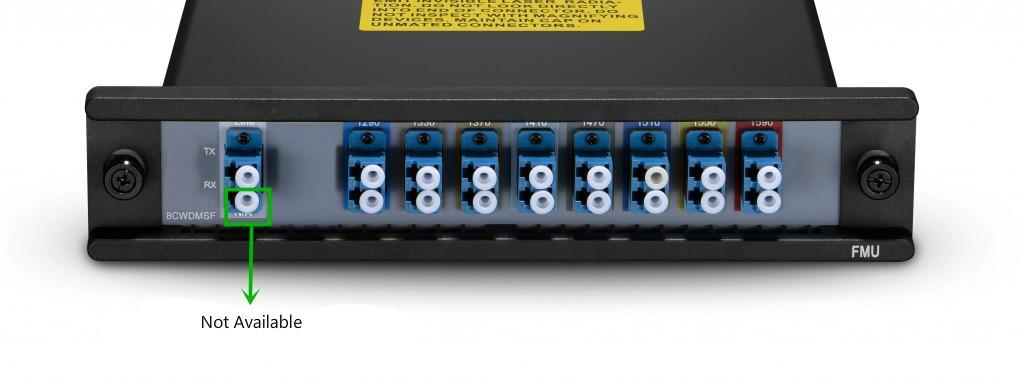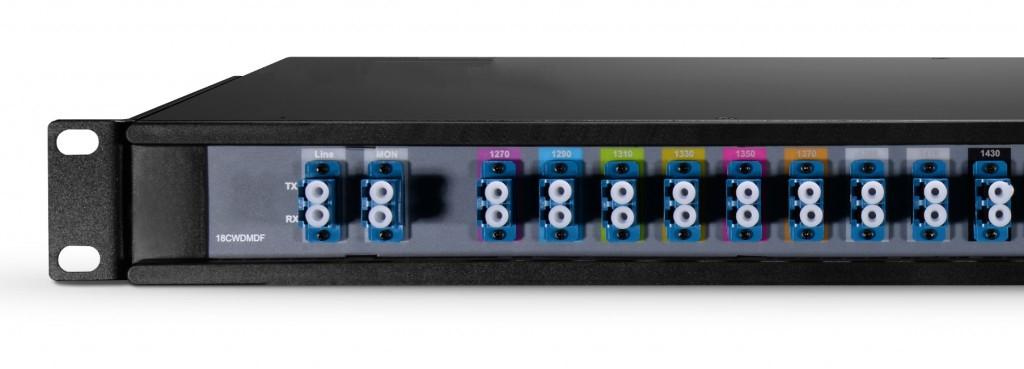With the maturity of wavelength division multiplexing (WDM) technology, CWDM & DWDM multiplexer / demultiplexer have been widely used in fiber extension application, it not only save the fiber resources, but greatly extend the network capacity as well. Anyone who has seen CWDM & DWDM multiplexer / demultiplexers knows that this equipment has various different ports, so what are these ports? What's the functions of them? This tutorial will give you an answer.
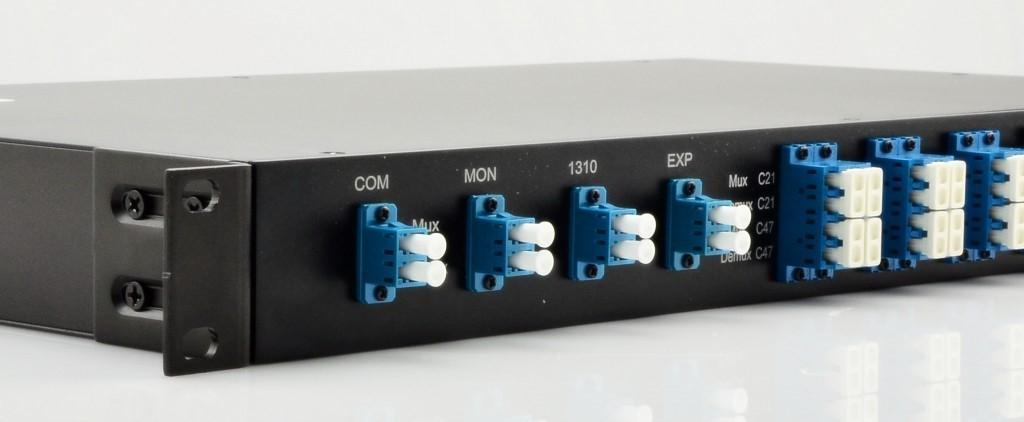
Required ports of CWDM & DWDM multiplexer / demultiplexer
We all know the fact that the main function of CWDM & DWDM multiplexer / demultiplexer is to multiplex the optical carrier signal with different wavelengths to an optical fiber for transmission to extend the transmission capacity of the network, and thus the required ports of CWDM & DWDM multiplexer / demultiplexer includes line port and channel port (optical carrier signal ports with different wavelengths).
Channel Port
Now, CWDM multiplexer / demultiplexer can multiplex up to 18 different wavelengths of optical carrier signals, the wavelength range is from 1270nm to1610nm, and the channel spacing is 20nm, specifically included: 1270nm, 1290nm, 1310nm, 1330nm, 1350nm, 1370nm, 1390nm, 1410nm, 1430nm, 1450nm, 1470nm, 1490nm, 1510nm, 1530nm, 1550nm, 1570nm, 1590nm and 1610nm. Among them, CWDM multiplexer / demultiplexer with 4-channel, 8-channel, 9-channel and 18-channel are commonly used.

DWDM multiplexer / demultiplexer can multiplex up to 96 different wavelengths of optical carrier signals, the wavelength range is from 1470nm to1625nm, and the channel spacing is 0.8nm (100GHz) or 0.4nm (50GHz), which commonly used for fiber extension for metropolitan area network and other long-distance transmission applications.
Line Port
CWDM & DWDM multiplexer / demultiplexer has two kind of line ports, one is the dual fiber bi-directional line port, and another is single fiber bi-directional line port, both are suitable for different application.
The transmit and receive port of dual fiber bi-directional multiplexer / demultiplexer correspond to one optical fiber, and the wavelengths of these two fiber are the same, in other word, the transmit and receive port of multiplexer / demultiplexer supports the same kind of wavelength transmission, therefore, the multiplexer / demultiplexer at both ends of the network should support the same wavelength.
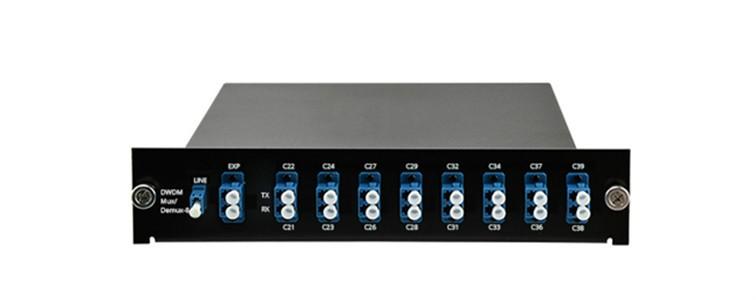
Single fiber bi-directional multiplexer / demultiplexer only uses a fiber to transmit and receive optical signal, so transmit optical signal and receive optical signal in the fiber must be adopted different wavelength to transmit. When using single fiber bi-directional multiplexer / demultiplexer in the fiber network, it should be noted that the wavelength of transmit optical signal at one end should coincide with the wavelength of the received optical signal at the other end and vice versa. In addition, there are some single fiber bi-directional multiplexers / demultiplexers on the market are still use duplex line port, but only one port to work. As the FMU single fiber CWDM multiplexer / demultiplexer shown below, although it configured duplex line port, actually there is only one port to work, another port is marked “not available”.
Other ports of CWDM & DWDM multiplexer / demultiplexer
Apart from two kinds of ports mentioned above, some CWDM & DWDM multiplexer / demultiplexer also configured expansion port, monitoring port, 1310nm / 1550nm port etc. Now we will detailed introduce them to you.
Expansion Port
The expansion port of CWDM & DWDM multiplexer / demultiplexer is very powerful, for example, if CWDM multiplexer / demultiplexer you purchased can only support several kinds of CWDM wavelengths, so you can use expansion port to connect this CWDM multiplexer / demultiplexer to the line port of another CWDM & DWDM multiplexer / demultiplexer, thereby achieve expansion easily and improve the transmission capacity of the fiber. Expansion ports can be configured on CWDM and DWDM multiplexer / demultiplexer.
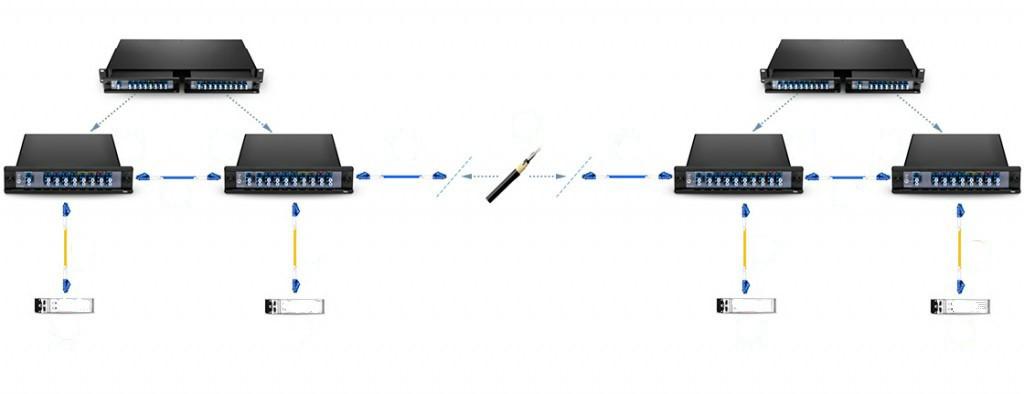
1310nm / 1550nm Port
1310nm and 1550nm represents two different kinds of WDM wavelengths, they are particularly because of the operating wavelengths of many fiber equipment are 1310nm and 1550nm, many optical modules use these two kinds of wavelengths for long-distance transmission. However, CWDM SFP / SFP + optical modules and DWDM SFP / SFP + optical modules must be used for each channel port of the CWDM & DWDM multiplexer / demultiplexer. If CWDM & DWDM multiplexer / demultiplexer configured 1310nm / 1550nm port, the ordinary SFP / SFP+ optical module can be used for CWDM & DWDM.
It should be noted that DWDM multiplexer / demultiplexer can only configure 1310nm. And for CWDM multiplexer / demultiplexer, its wavelength of channel will be limited if configured 1310nm or 1550nm port, in other words, the wavelengths in the range of 0 to 40 nm of 1310 nm or 1550 nm cannot be used as the channel wavelength of the CWDM multiplexer / demultiplexer, as shown in the following table:
|
Special Ports Configured
|
Channel Wavelengths of other ports
|
|
1310nm Port
|
1370nm,1390nm,1410nm,1430nm,1450nm, 1470nm,1490nm,1510nm,1530nm,1570nm,
1590nm, 1610nm
|
|
1550nm Port
|
1270nm,1290nm,1310nm,1330nm,1350nm,1370nm, 1390nm,
1410nm, 1450nm, 1470nm, 1490nm
|
|
1310nm and 1550nm Port
|
1270nm,1290nm,1310nm,1350nm,1510nm,1530nm, 1550nm,
1570nm, 1590nm
|
Monitoring Port
For the purpose of better monitor and manage CWDM & DWDM systems, the monitor ports have been added on the WDM & DWDM multiplexer / demultiplexer. The monitor port of single fiber bi-directional multiplexer / demultiplexer is usually used simplex fiber port; the monitoring port of dual fiber bi-directional multiplexer / demultiplexer can be either a duplex fiber port or a simplex fiber port, duplex fiber port can be used for monitoring the entire network, while single fiber port only can be used to monitor multiplexer / demultiplexer.




